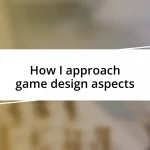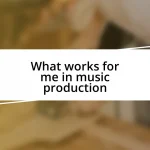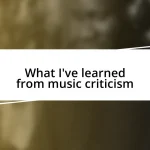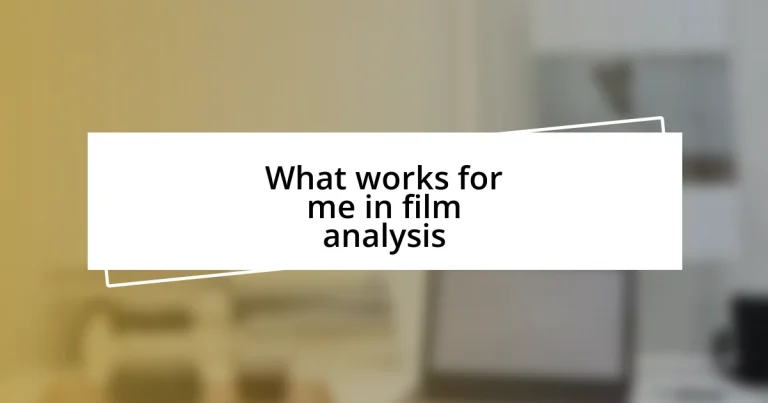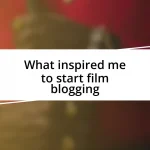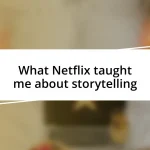Key takeaways:
- Cinematography and sound design are vital for evoking emotions and enhancing storytelling in films.
- Character development and narrative structure significantly impact viewer engagement and personal connections to the story.
- Applying film analysis during personal viewing deepens emotional responses and can lead to self-reflection and understanding.
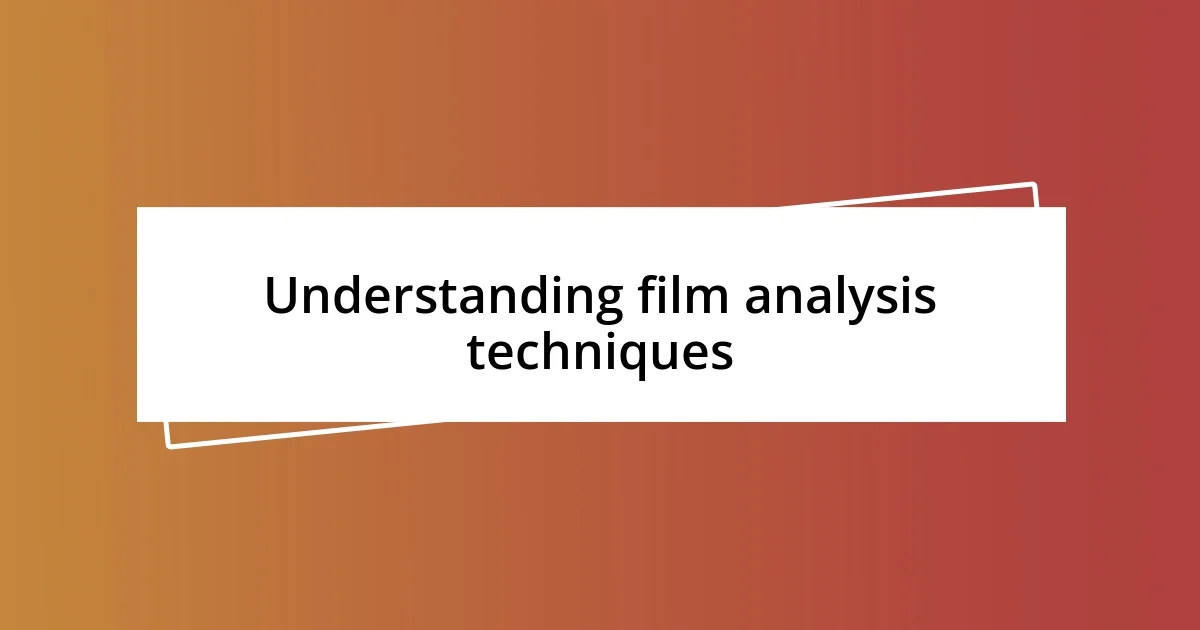
Understanding film analysis techniques
When diving into film analysis techniques, I often find myself drawn to the significance of cinematography. There’s something captivating about how a shot can evoke different emotions—think about how a close-up on a character’s face can convey their inner turmoil. Have you ever noticed how the framing can alter your perception of a scene? It’s like the camera is a storyteller in its own right.
Another technique that I’ve come to appreciate is the use of sound. The right score or sound design can elevate a film from good to unforgettable. I remember watching “Jaws,” where the simple two-note theme created such tension—it’s a masterclass in how sound can manipulate our emotions. It makes me wonder, how often do we overlook the auditory elements in a film’s impact?
Then there’s the narrative structure, which I believe is crucial for understanding a film’s deeper meanings. Take “Pulp Fiction,” for example. The non-linear storytelling challenges the viewer to piece together the narrative, making the experience more interactive and engaging. It’s fascinating to think about how our understanding of a film can shift with the order in which we receive information. Have you ever watched a film more than once and discovered layers you missed the first time? That’s the beauty of film analysis—it’s a journey that continues to unfold.
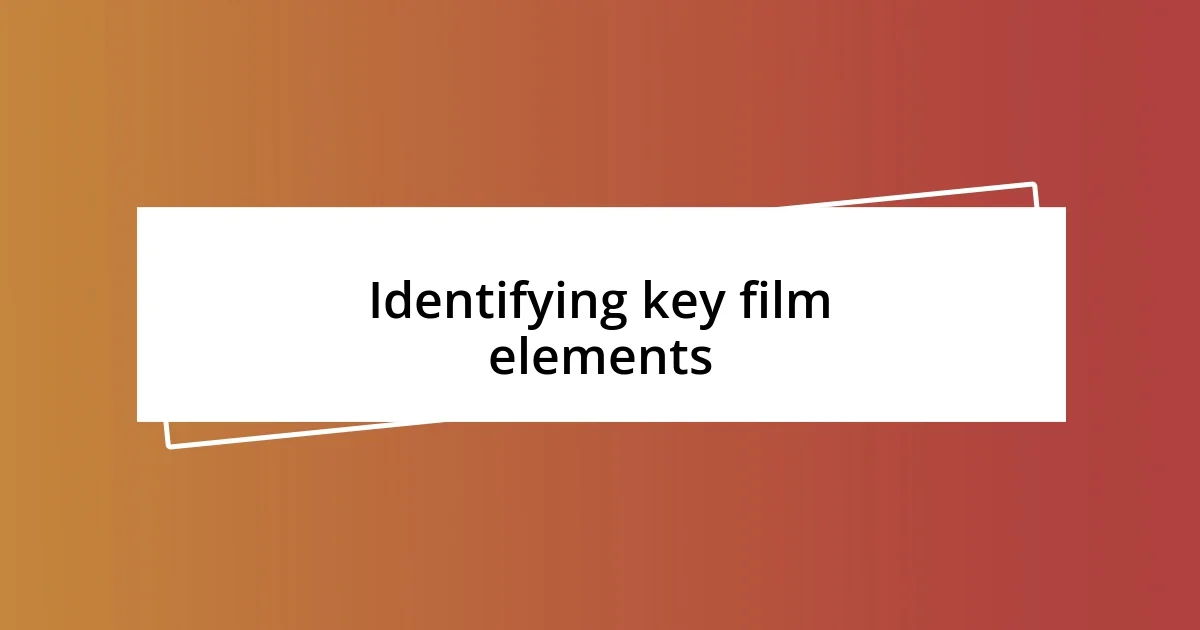
Identifying key film elements
Identifying key film elements is essential for a thorough analysis. I often start by focusing on visual composition because the way a film is shot can significantly impact how I perceive its story. For instance, while watching “Inception,” I was struck by the use of perspective shifts in action scenes. It made the dream-like narrative all the more immersive, almost as if I were part of the surreal experience.
Here are some key elements to consider:
- Cinematography: Look for camera angles, shot sizes, and movement.
- Color Palette: Analyze how colors influence mood and tone.
- Editing: Observe the pacing and transitions between scenes.
- Sound Design: Pay attention to how sound effects and music set the atmosphere.
- Performance: Evaluate how actors’ portrayals contribute to character depth and authenticity.
By dissecting these components, I find it enriching to see how each detail contributes to the whole, much like solving a puzzle piece by piece. This process deepens my appreciation for the craft behind storytelling in films.
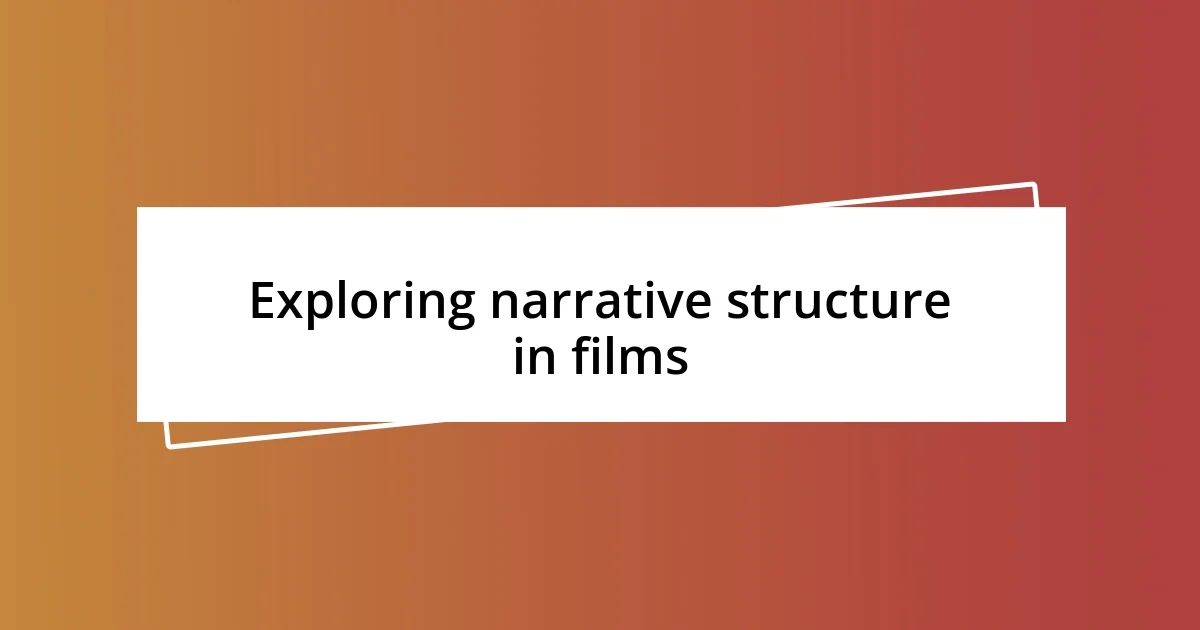
Exploring narrative structure in films
Exploring narrative structure in films is an exciting venture that can reveal so much about the filmmaker’s intention and our emotional response. One of my favorite aspects is the traditional three-act structure, which provides a familiar framework while allowing for inventive storytelling. For instance, I was struck while watching “The Shawshank Redemption” how the setup in Act One leads seamlessly into the development of friendships and personal growth in Act Two, finally culminating in a powerful resolution. It’s a reminder that a well-structured narrative can create a rollercoaster of emotions.
On the other hand, films that deviate from standard structures often provoke deeper engagement. Take “Eternal Sunshine of the Spotless Mind,” which circularly intertwines memories with the narrative. The jarring transitions struck a chord with me, evoking a sense of longing and confusion that mirrored the protagonist’s emotional state. When a film plays with time and narrative flow, it feels less like a story being told and more like a personal experience unfolding, which deepens my connection to the characters.
When I analyze a film’s narrative structure, I like to break down its key components. I often jot down the opening, the conflict, and the climax to see how these elements relate. This technique reminds me of “Memento,” which, due to its reverse chronology, turned my expectations upside down. I discovered how crucial the manipulation of time is in storytelling. Have you ever puzzled over a film’s timeline and felt that thrill of understanding how it all fits together? It’s like uncovering a hidden treasure!
| Narrative Structure | Description |
|---|---|
| Three-Act Structure | Classic framework with setup, confrontation, and resolution. |
| Non-Linear | Tells story out of chronological order, enhancing engagement. |
| Frame Story | A story within a story, adding depth and perspective. |
| Interactive Narrative | Audience choice affects the story progression, creating immersion. |
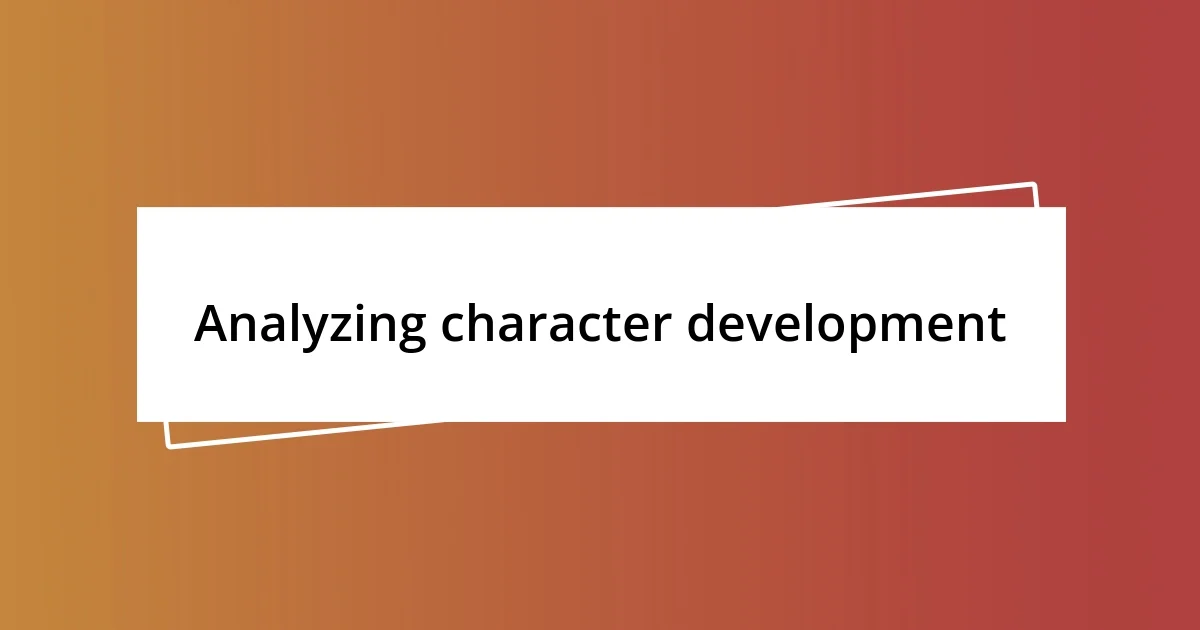
Analyzing character development
Character development is often the heartbeat of a film, drawing me in and making the story feel alive. I find it fascinating to observe how characters evolve throughout a narrative, reflecting personal growth or the consequences of their choices. Watching “The Godfather,” I couldn’t help but notice Michael Corleone’s transformation. Initially an outsider, his gradual embrace of his family’s criminal legacy is chilling yet compelling. It evokes an intense emotional reaction, as I often reflect on how personal circumstances can shape our identities.
When analyzing character arcs, I pay close attention to the decisions characters make and how these impact those around them. Take “Pulp Fiction,” for instance. Each character’s choices ripple through the plot, ultimately leading to unforeseen consequences. Juxtaposing Vincent Vega’s laid-back attitude with Jules Winnfield’s moment of revelation offers a rich tension. It begs the question: How do we define ourselves through our choices, and what happens when we face the consequences? It’s a concept that resonates deeply with me.
Lastly, the role of supporting characters should never be underestimated. In “Little Miss Sunshine,” the interactions among family members provide profound insights into their individual struggles and journeys. The way they bolster or challenge one another makes me reflect on my relationships. It’s striking how sometimes, the smallest moments can reveal the most significant character breakthroughs, reminding me of how interconnected our lives truly are. Have you ever noticed how a secondary character can steal the spotlight and add depth to someone else’s story? It’s those layers that keep me coming back to analyze films again and again.
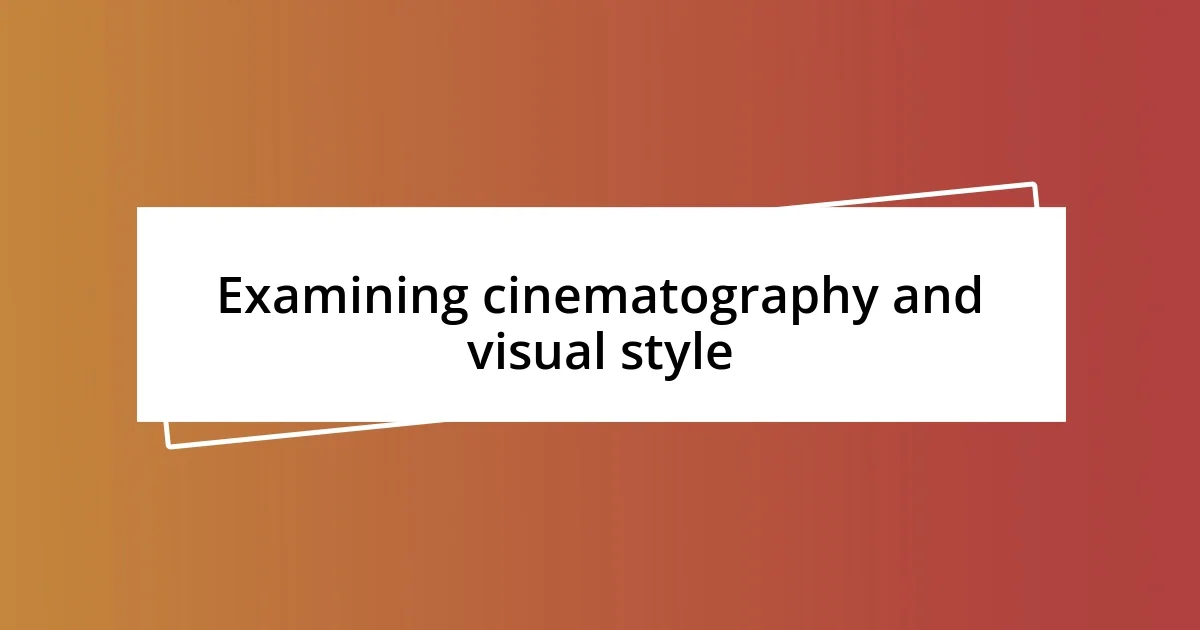
Examining cinematography and visual style
Examining cinematography and visual style is where a film truly begins to breathe. I remember being transfixed by the sweeping shots in “Blade Runner 2049”; the colors and compositions felt like mesmerizing paintings coming to life. Each frame seemed carefully crafted to evoke a mood, making me reflect on how visual elements can amplify the narrative.
Lighting plays a pivotal role in storytelling. In “Moonlight,” the use of warm, soft lighting during the tender moments struck a chord with me, contrasting with harsh shadows during the character’s struggles. It beautifully underscored the emotional highs and lows, and I found myself questioning—how does lighting impact our emotional understanding of a scene? Reflecting on this makes me more attuned to the subtleties that cinematography introduces, almost like a silent narrator guiding our feelings.
When I analyze visual style, I focus on camera movements and angles. Watching “Birdman,” the continuous shot technique placed me directly into the chaos and intensity of the theater. It felt as though I was part of the story, experiencing the protagonist’s emotional unraveling in real-time. This immersive approach made me ponder how visual style manipulates our experience—after all, isn’t it fascinating how a simple shift in perspective can completely change our understanding of a film?
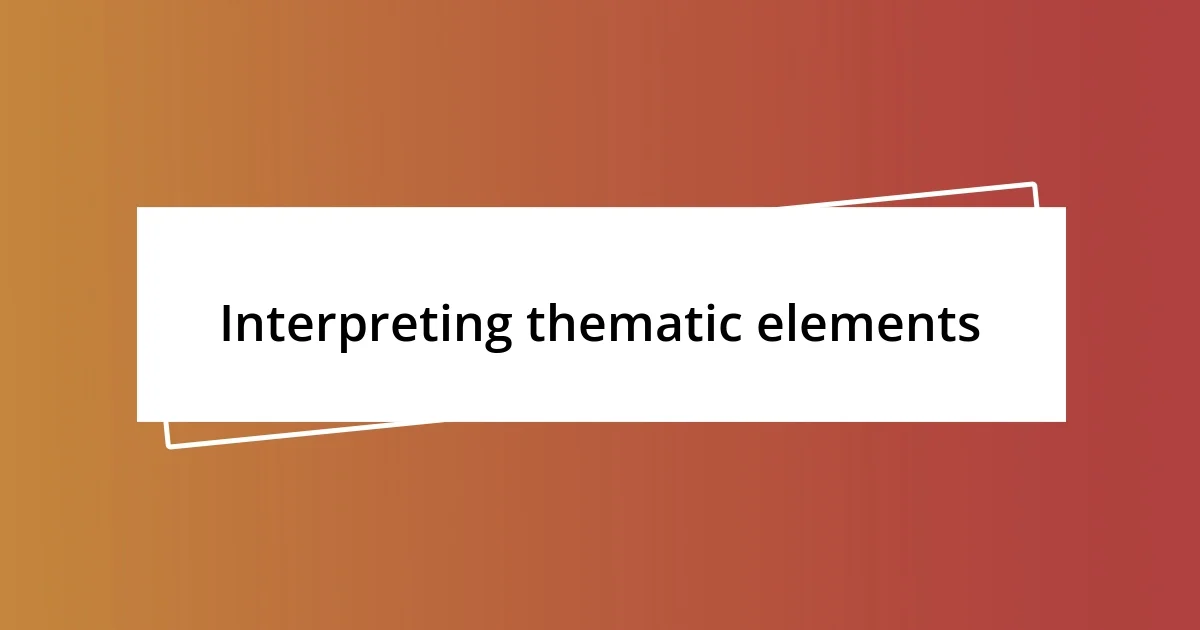
Interpreting thematic elements
Interpreting thematic elements in film is like peeling back layers of an onion; every layer reveals deeper truths about life and society. I remember watching “Get Out” and being struck by its commentary on race relations. The themes of horror intertwined with social critique left me pondering—how often do we overlook the subtle prejudices in our everyday lives? This film not only entertained but also forced me to confront uncomfortable realities, making me appreciate the power of a well-crafted theme.
When diving into themes, I often look for recurring symbols that create meaning throughout the film. In “The Shape of Water,” water serves as a metaphor for communication and connection—elements that transcend spoken language. Observing how these symbols interact with characters’ journeys gives me profound insights into their motivations. Isn’t it fascinating how a simple element can bridge two worlds, igniting a beautiful love story? This interconnectedness continues to resonate with me long after the credits roll.
Moreover, I find that themes often become more impactful when shared experiences among characters highlight universal truths. In “Nomadland,” the exploration of loneliness amid community really resonated with my own feelings during uncertain times. It prompted me to think—how do we find solace in a world that often feels fragmented? By showcasing individual stories tied to a larger theme, the film creates a sense of connection and shared humanity, inviting the audience to reflect on their own lives.
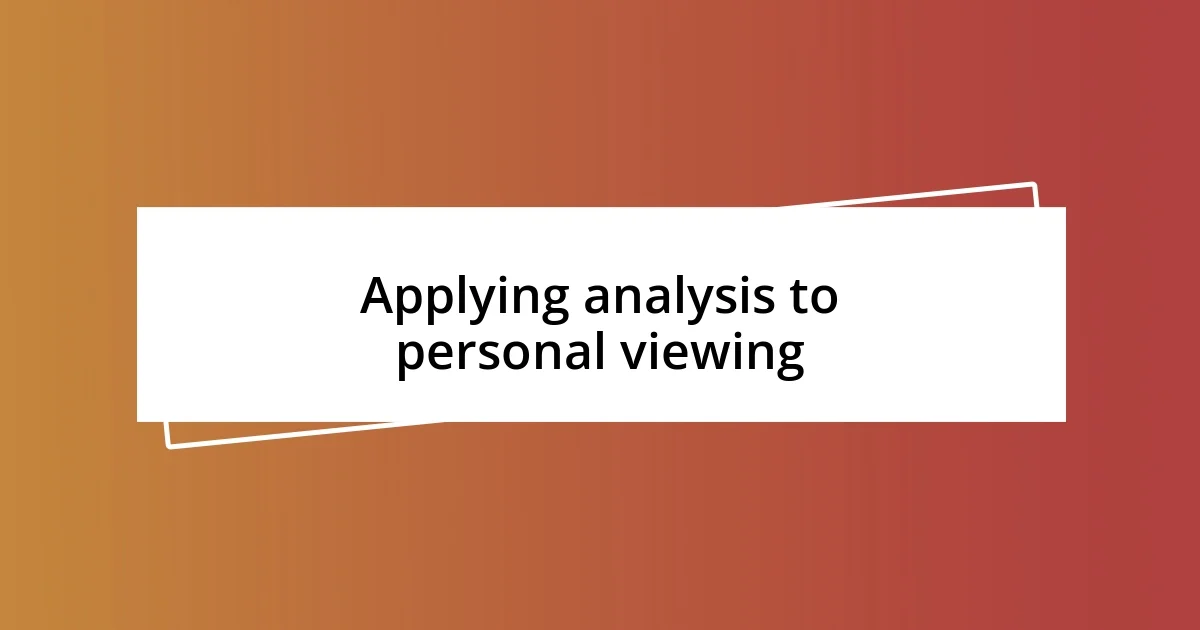
Applying analysis to personal viewing
Engaging in film analysis during personal viewing can significantly enhance my overall experience. I remember watching “Eternal Sunshine of the Spotless Mind” and actively thinking about how the nonlinear narrative structure shaped my emotional journey. Each time the story looped back on itself, I found myself not just a viewer but a participant, reflecting on memories and how they define relationships. Isn’t it intriguing how analyzing the storytelling mechanics can change our perception?
When I take a closer look at character development, I often feel a deeper connection to the narrative. I once watched “Lady Bird,” where the protagonist’s struggle for independence resonated with my own experiences in high school. Understanding her motivations and flaws helped me reflect on my relationship with my family. It made me realize—how often do we see parts of ourselves in a character’s journey? Such connections turn viewing into a mirror that reveals more about our own lives.
Applying analysis to personal viewing doesn’t just provoke thought; it also evokes emotion. During “Her,” I was mesmerized by the exploration of technology and isolation, prompting me to question my own digital relationships. I found myself wondering about the balance between connection and loneliness in my life. Analyzing these layers encourages me to engage with films in a way that transforms them into conversations rather than mere entertainment.
